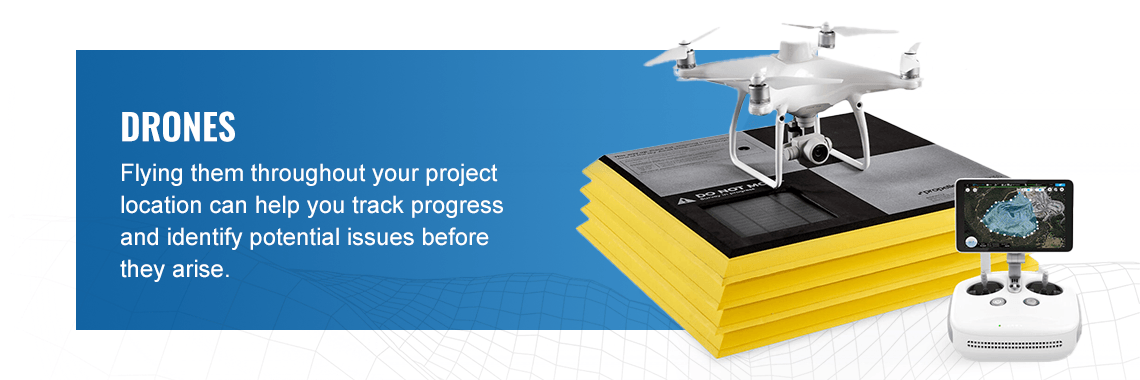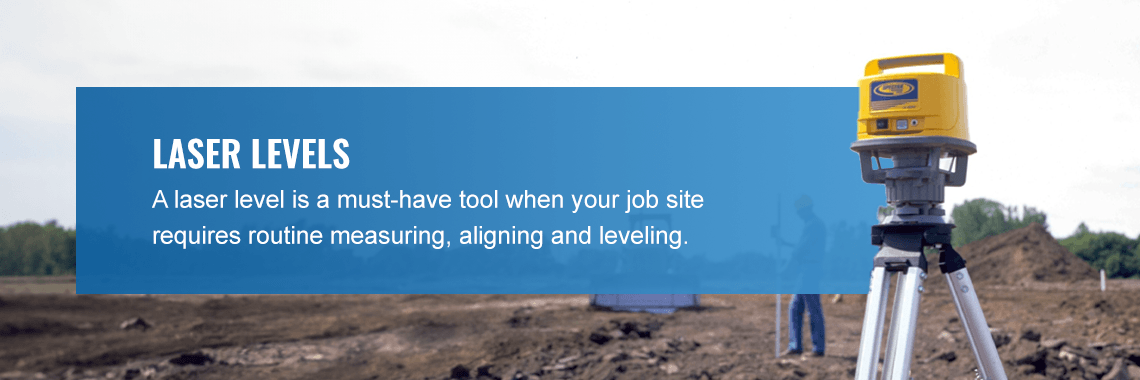New technology is popping up daily, designed to simplify workloads and enhance site performance. Owners and managers must stay updated with the latest innovations in the construction industry to utilize technology’s countless advantages. From low-risk work environments to enhanced decision-making, certain technologies can transform your job site to save you money and boost your end-to-end efficiency. Here are eight of the latest innovations in construction you should consider adding to your operation:
1. Computer Aided Designs and Building Information Modeling
Computer-aided design (CAD) programs and building information modeling (BIM) software allow your construction team to bring a detailed plan to life long before you ever break ground. BIM uses a variety of data types to create accurate digital representations and 3D models of projects using height, width, depth and other data points. These construction technology software tools, like Trimble Connect, enable your team to isolate each building stage, from laying the foundation to installing the HVAC. They’re designed to facilitate meaningful collaboration before, during and after construction, giving you what you need to visualize the construction process and predict potential problems to decrease risk, improve timelines and save money.
2. Geo-Enabled Devices
Surveying is an important step in the construction process to “stake out” or mark out reference points. These reference points establish and verify the location of the structures you’re creating, including highways, buildings and bridges. Geographic information systems (GIS) technology is crucial to gather and interpret high-quality information to shape surveying applications efficiently. This technology accelerates surveying tasks, helping your team collect, manage and analyze spatial and geographic information.
With uninterrupted access to complex geospatial data and accurate land measurements, you can create detailed 3D maps and models of construction sites and building plans. Models can be useful in site selection, land suitability analysis and surveying applications. You can even leverage geo-focused construction site position systems to help you monitor your equipment, identify potential hazards and keep operations on schedule. Here are some helpful types of geo-enabled construction surveying equipment:
- Drones
- Magnetic locators
- Theodolites
- Total stations
- 3D scanners
- Electronic levels
3. Drones

Drones, also referred to as unmanned aerial vehicles (UAVs), are remotely controlled devices capable of assessing sites from the air. They can reduce common safety risks associated with construction sites by allowing operators to comprehensively investigate potentially hazardous or hard-to-reach locations without physically entering. However, their scope extends further than just safety. Flying them throughout your project location can help you track progress and identify potential issues before they arise. Since drones only require a single operator and can cover large acreages quickly, these devices can boost your project timelines while decreasing labor costs simultaneously. Drones can be equipped with cameras and sensors, allowing them to tackle projects like:
- Land surveying and mapping
- Security surveillance
- Remote monitoring
- Equipment tracking
4. Construction Wearables
Wearable technology offers a safer and more productive way to work. These advanced tools come in many forms, including strength-enhancing power gloves and augmented reality (AR) glasses.
AR technology allows construction workers to bring the computer screen into the real world. The Trimble XR10 with Hololens is a cutting-edge mixed reality hard hat that allows operators to seamlessly track issues, detect clashes and measure in relation to as-builts for better performance and financial health.
5. Asset Tracking Tools
Asset tracking software, like the Trimble WorksManager, provides your business with adequate visibility of the location of your heavy equipment. This oversight can be especially helpful in avoiding theft and preventing significant losses. If your assets are stolen, you’ll have the information required to locate the equipment and return it to its rightful place at your job site.
Tracking tools can also provide vital information regarding your current processes. Some systems can analyze time spent running, downtime, productivity and other factors you can consider to make meaningful changes to your workflow. They can even track the life cycle of your equipment, providing essential data for planned maintenance.
6. Laser Levels
A laser level is a must-have tool when your job site requires routine measuring, aligning and leveling. These tools produce highly accurate beams of light you can use as a reference point when erecting walls, installing windows and establishing grades. Laser levels are hand-held, user-friendly tools requiring only a single operator to work long distances. You’ll need a laser receiver when working outdoors since the human eye has more difficulty seeing the laser in daylight.

There are three popular configurations of precision laser-level equipment:
- Grade lasers: Using grade lasers for construction allows workers to tilt the angle of the light beam for extreme precision.
- Line level lasers: Line lasers are primarily used indoors to project a single horizontal or vertical line or a cross-hair configuration onto a wall.
- Pipe lasers: Lay pipes confidently using lasers that make it easy to work around tight inverts.
7. Green Technology
The idea of “Going Green” has been around for years, but new heavy equipment technology continues to push the boundaries of construction sites’ operations. Heavy machinery manufacturers have slowly transitioned to electric-powered configurations, relying on high-performance batteries rather than the low-carbon emitting fuels in traditional equipment. Implementing Leadership in Energy and Environmental Design (LEED) certified tools, strategies and materials can help you create a favorable public image while also enabling your job site to reduce long-term operating expenses, minimize energy consumption and achieve sustainable practices.
8. 3D Printing
Additive manufacturing is producing components, parts and tools from digital files. Data is collected by 3D scanners and CAD programs and imported to innovative printers, commonly for design and prototyping applications. They can receive programming instructions to shape cement, metal and plastic into usable framing, wall panels or window assemblies. Building them off-site and having a stockpile ready to go when you need them will speed up your projects and save some material costs in the process.
Your Go-To Construction Technology Provider
SITECH Horizon is the premier construction technology provider in North Carolina’s Western and Piedmont regions. Professionals working on various projects turn to our experienced team for cutting-edge solutions. Whatever your operations look like, we’ll help you find the right tools and support you after your purchase with technical advice, informative training and caring customer service.
Contact Us Before Your Next Construction Project
Interested in learning more about the selection of construction technology at SITECH Horizon? Contact our team online to discover how we can enhance your next construction project today.

